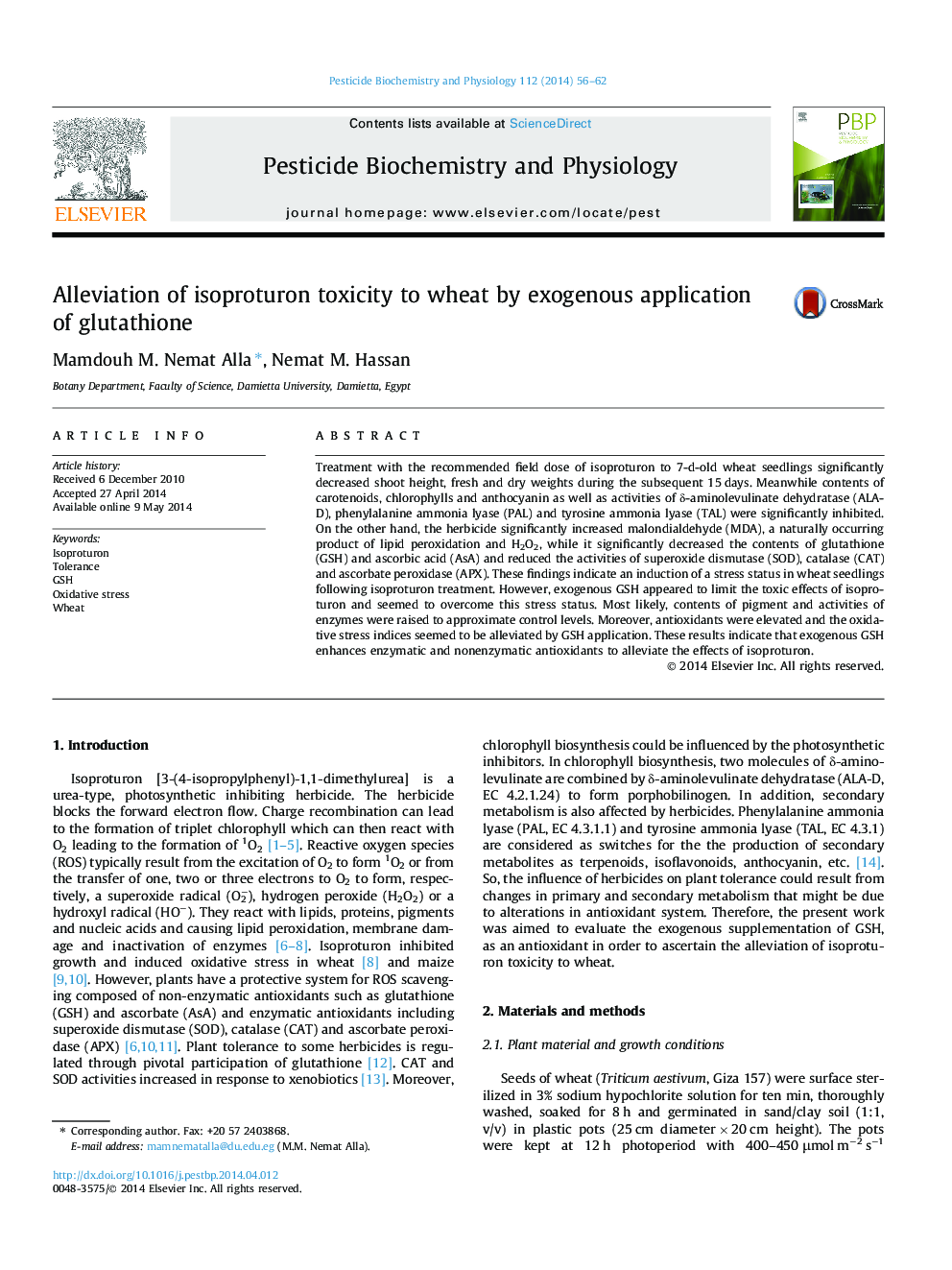| کد مقاله | کد نشریه | سال انتشار | مقاله انگلیسی | نسخه تمام متن |
|---|---|---|---|---|
| 2009211 | 1541787 | 2014 | 7 صفحه PDF | دانلود رایگان |
• The work confirms that isoproturon is toxic to wheat.
• Exogenous GSH overcame the induced stress status.
• GSH approximated pigment and antioxidants to control levels.
• The oxidative stress indices were alleviated by GSH.
• External GSH elevated tolerance in wheat to isoproturon.
Treatment with the recommended field dose of isoproturon to 7-d-old wheat seedlings significantly decreased shoot height, fresh and dry weights during the subsequent 15 days. Meanwhile contents of carotenoids, chlorophylls and anthocyanin as well as activities of δ-aminolevulinate dehydratase (ALA-D), phenylalanine ammonia lyase (PAL) and tyrosine ammonia lyase (TAL) were significantly inhibited. On the other hand, the herbicide significantly increased malondialdehyde (MDA), a naturally occurring product of lipid peroxidation and H2O2, while it significantly decreased the contents of glutathione (GSH) and ascorbic acid (AsA) and reduced the activities of superoxide dismutase (SOD), catalase (CAT) and ascorbate peroxidase (APX). These findings indicate an induction of a stress status in wheat seedlings following isoproturon treatment. However, exogenous GSH appeared to limit the toxic effects of isoproturon and seemed to overcome this stress status. Most likely, contents of pigment and activities of enzymes were raised to approximate control levels. Moreover, antioxidants were elevated and the oxidative stress indices seemed to be alleviated by GSH application. These results indicate that exogenous GSH enhances enzymatic and nonenzymatic antioxidants to alleviate the effects of isoproturon.
Figure optionsDownload as PowerPoint slide
Journal: Pesticide Biochemistry and Physiology - Volume 112, June 2014, Pages 56–62
